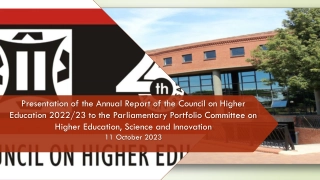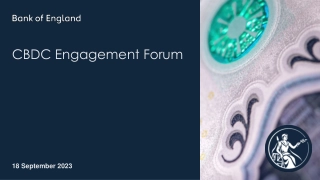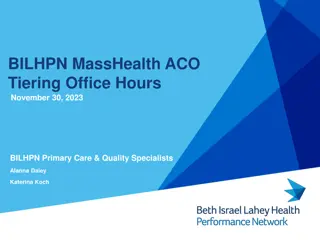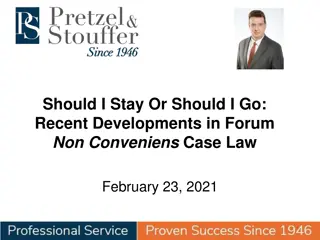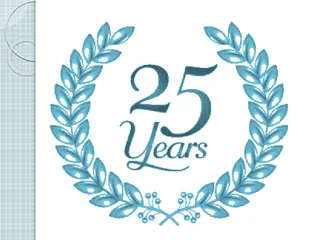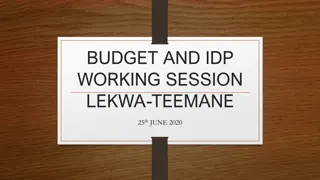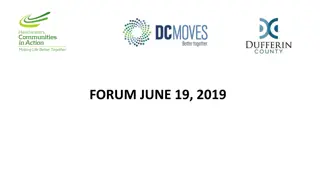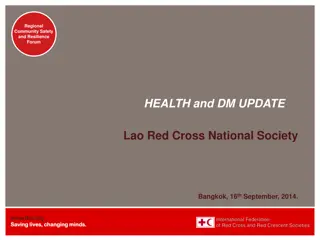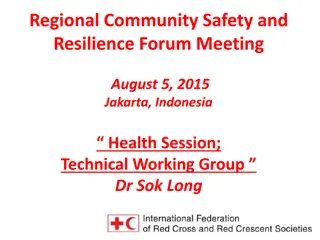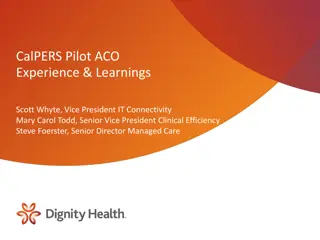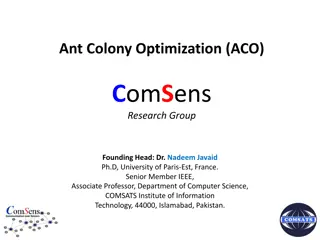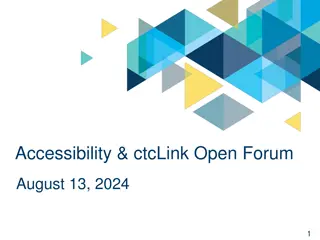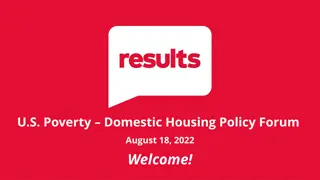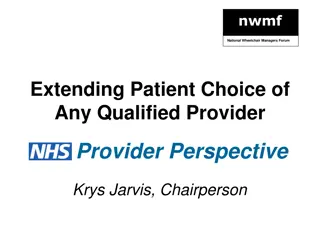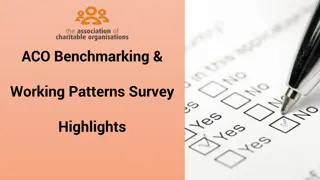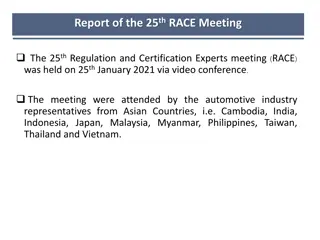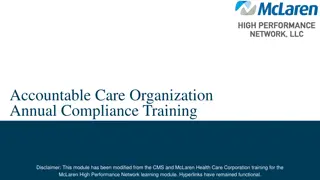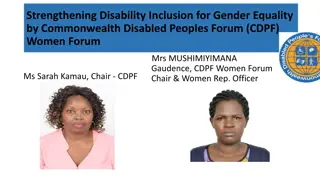ACO Forum August 25th, 2021 Agenda Overview
The ACO Forum on August 25th, 2021, will cover a range of topics including transitioning to MSSP Enhanced, quality requirements, chronic care management updates, shared savings distribution plan, and strategic approaches for 2022 and beyond. Explore membership statistics, CMS savings, and key program deadlines. The event will also focus on provider performance, evaluation, and various quality measures for 2021. Don't miss out on updates and insights relevant to ACO participation and program success.
Download Presentation

Please find below an Image/Link to download the presentation.
The content on the website is provided AS IS for your information and personal use only. It may not be sold, licensed, or shared on other websites without obtaining consent from the author.If you encounter any issues during the download, it is possible that the publisher has removed the file from their server.
You are allowed to download the files provided on this website for personal or commercial use, subject to the condition that they are used lawfully. All files are the property of their respective owners.
The content on the website is provided AS IS for your information and personal use only. It may not be sold, licensed, or shared on other websites without obtaining consent from the author.
E N D
Presentation Transcript
PEC Post-Emergency, multi-hazard health risk assessment in Chemical disasters 2015 call for proposal: Prevention and preparedness projects in civil protection and marine pollution Duration: 24 Months Official starting date: 1 January 2016 Total eligible costs : 788,803 EC contribution: 591,601 (75%)
Consortium composition Project coordinator: Fondazione Centro Europeo di Formazione e Ricerca in Ingegneria Sismica EUCENTRE (Italy) Project partners: Aristotle University of Thessaloniki AUTH (Greece) Technisclie Universiteit Delft TUD (The Netherlands) D Appolonia S.p.A. (DAPP) (Italy)
Main objectives To develop a methodology for comprehensive and rapid health risk assessment of chemical releases from natural disasters or technological system failure. To develop and apply computational tools for risk prioritization in industrial facility clusters and population- based health impact assessment To develop a series of risk mitigation guidelines for characterisation of multi-hazard and multi- event-related health risks in chemical exposures following natural or man- made disasters.
Specific objectives Application of integrated model for rapid multi hazard health risk assessment on chemical release incidents occurring during major natural or man made disasters. Development of composite risk matrix, considering both severity and probability of identified hazards, to prioritize disaster related public health risks from clusters of industrial facilities handling toxic chemicals. Development of integrated computational platform covering the full chain from chemical releases to internal doses in human tissues in order to build a functional and ready-to-use software operated by local authorities responsible for civil safety and public health protection.
Why PEC is necessary Current analysis of health impacts associated with accidental release of chemicals from industrial sources is based on knowledge of inherent properties of individual agents and the predictable response to a given dose of the chemical determined by classical health risk assessment methods. Limited information exists on health risks posed by absorption of complex chemical mixtures or derived from combined accidents, natural and technological (NaTech) causing environmental release and dispersion of toxic chemicals in the primary disaster area. A consolidated methodology for risk assessment of chemical mixtures and combined NaTech hazards is currently NOT available
Risk and mitigation Risk Source Pathway Receptor R V H E = % Contamination probability Tanks Stiff Soil Soft Soil Mitigation Options Buildings PGA Struct. Damage exposed value V H R E =
The response of PEC PEC will bridge the gap developing an integrated multi- hazard risk assessment toolkit that will be validated on a specific project case study Immediate and long-term population health impacts of the toxic chemicals absorbed combination will be determined A risk prioritisation matrix based upon damage level attainable in the infrastructures and potential public health risks will be developed to provide strategic risk information for public health planning. either individually or in
Project deliverables during first 12 Months Deliverable title Deadline D.F.1: Grant agreement Month 1 D.F.2: Meeting with European Commission in Brussels Month 1 D.F.4: Work plan Month 1 D.F.3: PCM Meetings Month 1, 8, 16, 24 D.G.1 Project web portal Month 2 D.G.2 Dissemination and results exploitation plan Month 3 D.G.3 Project leaflets Month 3 D.A.1 Definition and identification of the study area Month 3 D.A.2 Hazard identification for earthquakes Month 6 D.A.3 Hazard identification for floods Month 6 D.A.4 Anthropogenic hazard identification Month 6 D.G.4 Newsletters and policy briefs on project website Month 6, 18, 18, 24 D.F.5: Technical reports (2 interim and 1 final) Month 8, 16, 24 D.F.6: Financial reports (2 interim and 1 final) Month 8, 16, 24 D.B.1 Definition of the structural models and seismic fragility analysis techniques available for the specific case study Month 9 D.B.2 Definition of the susceptibility of the structures included in plants and estimation of the fragility related to disasters Month 12 D.B.3 Report on the evaluation of possible damages suffered by critical structures and infrastructures as consequence of a terroristic attack Month 12 D.C.1 Report on environmental multi-hazard contamination assessment Month 12 D.G.5 Scientific/technical papers submitted to journals/conferences Month 12, 24
Tentative dates and places for Major Events Internal kick-off meeting: end of January 2016 4 Project Managing Committee meetings (M1, M8, M16, M24) Public Working Group Workshop in Pavia (M22) Final PEC public conference (M 24) We shall organize working meetings and workshops and propose platform /discussions sessions at major national/international conferences early in the project to engage with stakeholders including policy-makers and local authorities responsible for public health management and planning. X 2016 conference in Barcelona in mid-September 2016 ISES 2016 conference in Utrecht in mid-October 2016. 19thMESAEP symposium in September 2017.
PEC: Follow-up Dissemination and promotion of the application of the methodology developed and implemented in PEC for integrated assessment of chemical disasters will be continued after the end of the project through the maintenance and updating of the project web site, the active participation to ad-hoc workshops and specific conferences and the publication of the results of the project in peer-reviewed international journals. The PEC computational platform will be an integrated tool ready-to-use by local authorities responsible for civil safety and public health protection and it will live beyond the lifetime of the project. Close collaboration with key stakeholders and the local community has been built into the project implementation plan and will continue after the end of the project. Follow up and monitoring of impact: outcome of the project will be monitored through local partners well established in the local community as reference centres for public health planning and preparedness.


